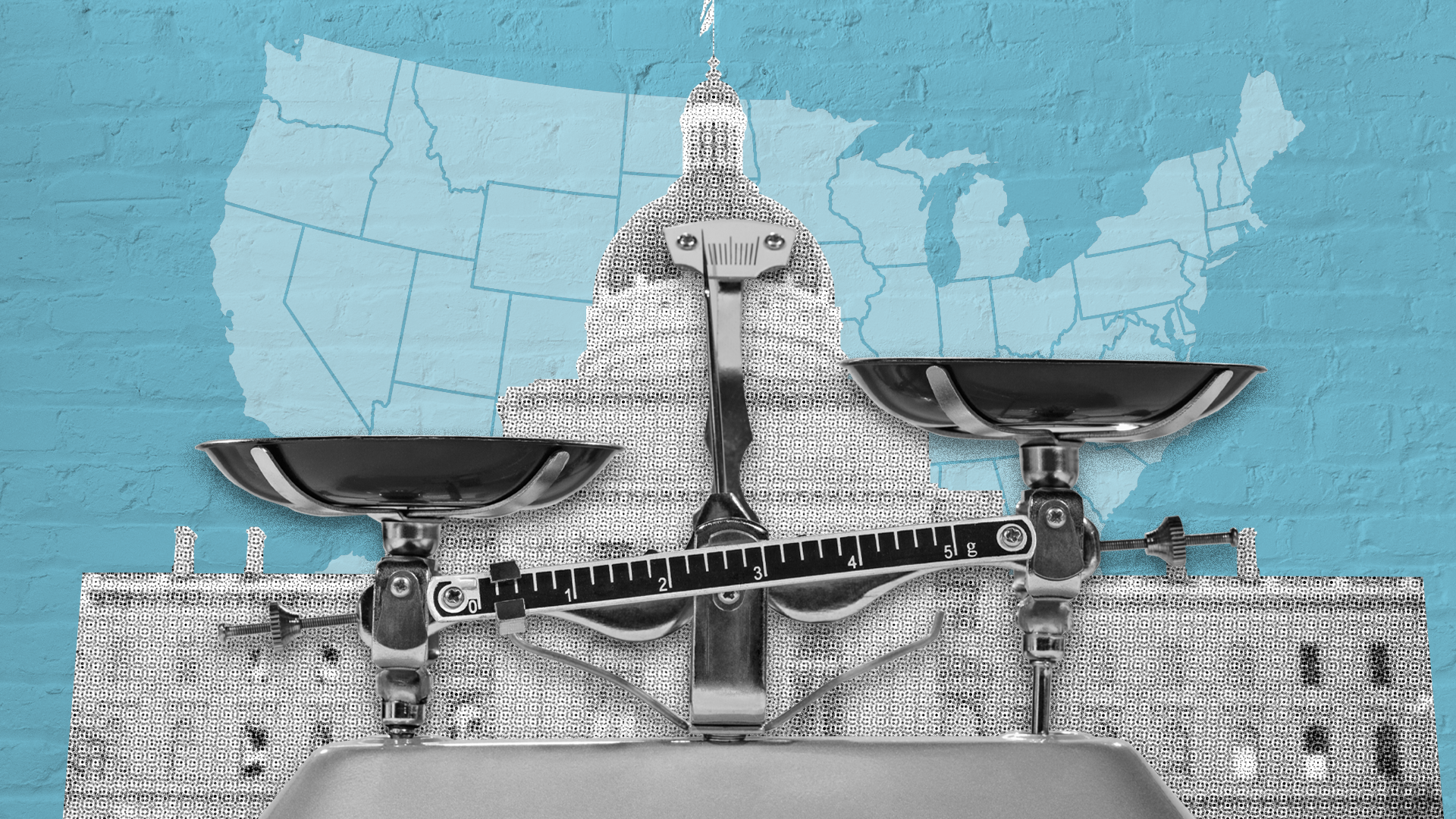Economic Issues Likely to Take Center Stage in State of the Union
State lawmakers also grappling with fiscal concerns and potential budget shortfalls this year

The economy will undoubtedly be a central theme in President Joe Biden’s State of the Union on March 7, his last address before he stands for re-election. Although the president’s focus will likely be on the national perspective, states and state budgets also face significant economic uncertainty. As tax revenue growth slows from its record-setting pace of the last few years and new economic realities sink in, state lawmakers face emerging fiscal risks and challenges.
Facing budget shortfalls
After two straight years of double-digit tax revenue growth nationwide, states curbed their expectations for fiscal year 2024—and some are still coming up short. At least seven are reporting deficits in the current or upcoming fiscal year, including a record $73 billion shortfall through fiscal 2025 in California.
Elsewhere, lawmakers will have to grapple with the effects of increased costs, tax cuts, or both. For example, in response to a federal judicial order, Arizona plans at least a one-third increase in prison medical spending, even as policymakers deal with a projected state budget deficit of more than $400 million. Analysts attribute most of the shortfall to a larger-than-expected drop in income tax revenue after a major tax cut went into effect in 2023.
Maryland, meanwhile, is struggling to manage increased costs from a major school funding law and the expansion of its Earned Income Tax Credit while addressing a structural budget shortfall projected to widen to $2.2 billion by fiscal 2028. A recent report by the state comptroller notes that Maryland’s slowing economic growth and related budget problems predate the pandemic—a signal that lawmakers may have to adopt both revenue-raising and cost-cutting measures to resolve the structural imbalance.
In many states, policymakers also find themselves grappling with reduced financial help from the federal government after several years of massive infusions primarily tied to the COVID-19 pandemic.
Expiring pandemic aid
Between 2020 and 2021, the federal government passed six pandemic relief bills that provided additional funding for state and local governments, Medicaid, and particularly hard-hit public sectors such as transit. All told, states received an unprecedented $800 billion in relief during this time, including $307 billion in flexible fiscal recovery funding that went directly to state coffers.
Now, however, most pandemic aid programs have either ended or are slated to do so by the end of 2024. And with sectors such as public education, child care, and transit suffering lasting harm from the pandemic, the end of that funding means state policymakers throughout the country will have tough decisions to make in upcoming legislative sessions.
Among the aid programs that have already expired or are winding down in 2024 are the Medicaid funding boost that Congress authorized in 2020; nearly $16 billion in emergency funding for struggling public transit systems and for Amtrak; the Elementary and Secondary School Emergency Relief Fund, which provided a total of $190 billion to schools; and $24 billion in child care stabilization funds from 2021’s American Rescue Plan Act. In addition, states must allocate any of their remaining flexible recovery funds by the end of this year.
The one-time nature of this federal assistance can, if not managed properly, create risks for state budgets—especially if the funds are allocated toward ongoing services and programs. To limit that risk, states should endeavor to use federal pandemic funds to address immediate and acute needs, direct one-time funds for one-time investments, assess the indirect impact of federal funding, and take actions to limit risks when using one-time funding on operational expenses. These steps can help policymakers avoid creating a fiscal imbalance when using one-time funds and having those funds inevitably run out.
These are just some of the fiscal challenges that state lawmakers face at a time when the higher cost of goods and services and general political divisiveness and polarization can make it difficult to find an affordable middle ground. Promoting policies that help states weather economic downturns and improve long-term budget stability can help ensure that critical government services that residents depend on—including education, healthcare, and transit—are reliably and sustainably funded.
Rebecca Thiess works on The Pew Charitable Trusts' managing fiscal risk project, and Liz Farmer works on the state fiscal policy project.














